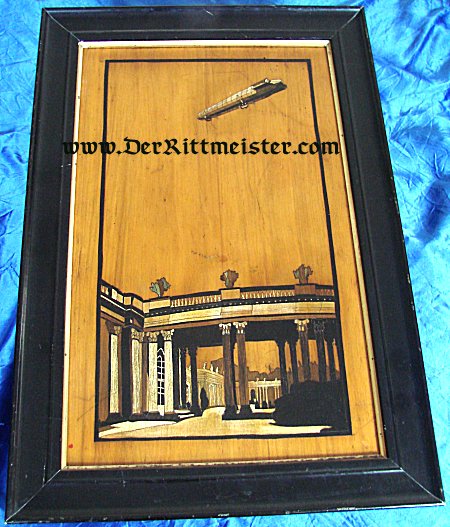Description
The S.M.Y. (Seiner Majestät Yacht) Hohenzollern was Kaiser Wilhelm II’s royal yacht. An earlier royal yacht by the same name was launched in 1878 and used by the House of Hohenzollern heads until 1892. It was then renamed the Kaiser Adler and later scrapped in 1912. The second, and most famous, S.M.Y. Hohenzollern was placed in service in 1894. It was used extensively by Kaiser Wilhelm II until just shortly before WW I began, when it was retired. [A bigger and even more opulent S.M.Y. Hohenzollern actually was launched in 1914, but it remained incomplete due to the war].
Wilhelm II spent the equivalent of five years (from 1894 through the first part of 1914) aboard the second Hohenzollern, primarily sailing around the Baltic, North, and Mediterranean Seas. Every summer, with the exception of 1906, Wilhelm’s favorite destination was Norway. The Hohenzollern, accompanied by at least one German cruiser anchored in a fjord, where the Kaiser exercised daily in the morning, sailed, and enjoyed visits ashore. He and his guests dined luxuriously from a table service specifically designed for use aboard the S.M.Y. Hohenzollern. The Kaiser maintained many different place settings at his various castles and estates. He even had a set designed for his use aboard the Kaiserliche Marine’s various flagships, as well as aboard his racing sloop. [Saying the Kaiser knew how to live it up in style is a gross understatement]. One tableware pattern that many Imperial German collectors prefer is that from the S.M.Y. Hohenzollern’s table service.
Today we are offering you a very rare example of a soup bowl from that same pattern, measuring 10″ in diameter. The bowl features a double-gold rim, one quite simple and the other more decorative. At the bowl’s top is the Kaiser Flag, which always accompanied Wilhelm wherever he went and was displayed when he was on the land with his army units. The flag usually was carried by a Regiment der Garde du Corps trooper (the ones who sported gilt metal helmets displaying the Hohenzollern Eagle). The letters “S.M.Y.,” appear below the flag and sit above a blue banner displaying “Hohenzollern” written in gold. The bowl’s center displays an Order of the Black Eagle Kette (collar), which features Wilhelm II’s royal cypher in its center. [The Order of the Black Eagle was intended for members of the nobility and royalty rather than ordinary members of the military. All male House of Hohenzollern (HoH) members received some level of the order. Some celebrated individuals, such as Generalfeldmarschall August von Mackensen, also were awarded the decoration].
This soup bowl was produced by the porcelain manufacturing firm KPM. Königliche Porzellan Manufaktur’s history began in 1763, when Prussian König Friedrich der Große (1712-1786) purchased the firm from its original owners. From that point forward, KPM’s trademark included a cobalt-blue scepter along with the firm’s three initials. [A royal orb was added to the trademark beginning in 1803]. In addition, all HoH members began purchasing KPM’s tableware for their royal estates. [KPM continues to produce some of the world’s finest porcelain items today, along with other such Imperial German-era survivors as Saxony’s Meissen and Bavaria’s Rosenthal].
The bowl’s underside features the correct KPM trademark that includes the scepter and orb. Wilhelm II’s tableware commonly added a date to indicate when the piece was placed into service. Our soup bowl’s date is 1914, the year of the ship’s final July voyage prior to WW I’s start! This means it was one of the last items to be placed in service aboard the S.M.Y. Hohenzollern.
Did Kaiser Wilhelm II eat from this bowl? We have no way of knowing. You, however, can feel like a royal when you purchase this very rare bowl!








